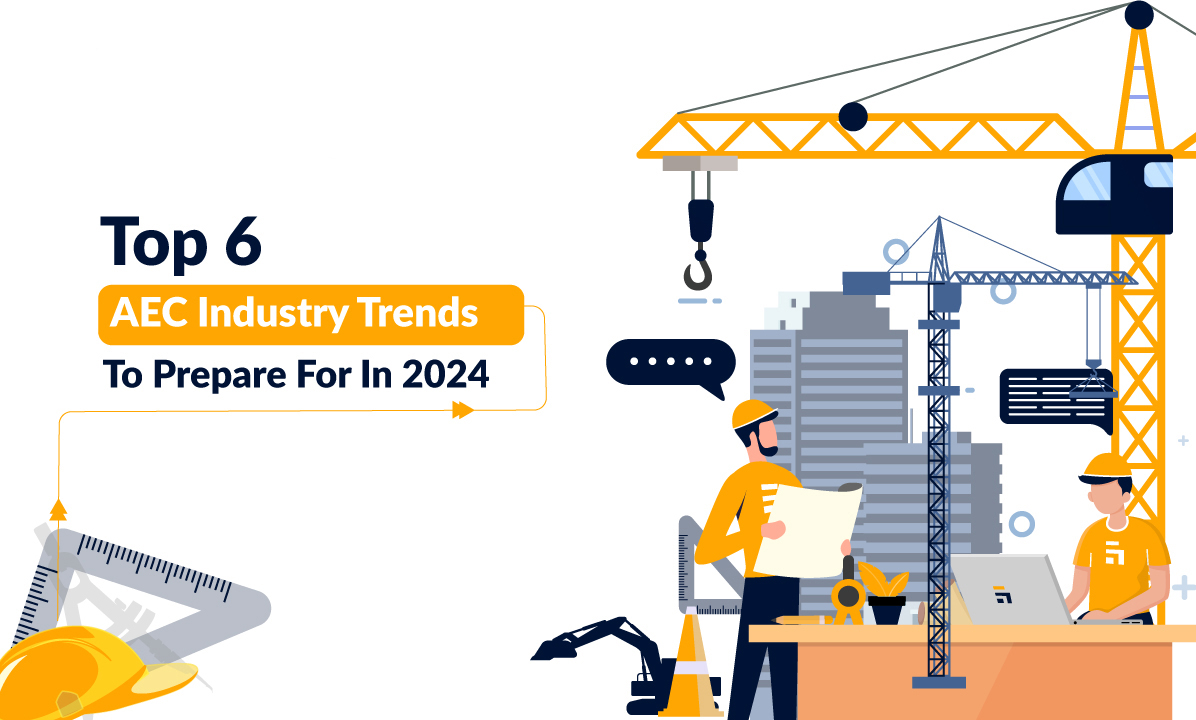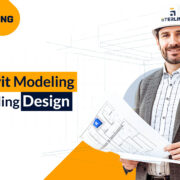
Top 6 AEC Industry Trends to Prepare for in 2024
As we enter 2024, the Architecture, Engineering, and Construction (AEC) industry in the United States is poised at the brink of a transformative era. The upcoming year holds great potential for construction projects linked to manufacturing, transportation infrastructure, and clean energy.
This optimistic outlook stems from the passage of three groundbreaking legislations in 2021 and 2022—the Infrastructure Investment and Jobs Act (IIJA), the Inflation Reduction Act (IRA), and the Creating Helpful Incentives to Produce Semiconductors (CHIPS) Act—which are anticipated to inject funds into the industry.
Engineering firms, big and small, must gear up to navigate these changes effectively. Here are the top six trends and opportunities that architectural, engineering, and construction firms need to prepare for in 2024:
Top 6 AEC Industry Trends for 2024
1. Embracing the Digital Leap
The digital wave is no longer just a ripple; it has transformed into a powerful force reshaping the way we plan, design, and construct. With technologies like Building Information Modeling (BIM), Artificial Intelligence (AI), machine learning, robotics, Internet of Things (IoT), drones, and visualization technologies such as Augmented Reality (AR), Virtual Reality (VR), and Mixed Reality (MR), alongside cloud-based systems, the possibilities are endless. Firms should invest in training their workforce in BIM and other digital tools. Collaborating with specialized design/drafting firms can help access expert BIM services and CAD expertise, ensuring high-quality project outcomes without requiring extensive in-house training.
2. Tackling the Labor Challenge
The labor shortage in the AEC industry is a puzzle that needs solving. According to a 2019 survey by Autodesk and the Associated General Contractors of America (AGC), 80% of respondents said they are having difficulty filling hourly craft positions. The answer lies in workforce development and embracing labor-saving technologies. The existing labor shortage in the construction field is expected to continue in 2024; firms can address this challenge head-on by investing in education and apprenticeship programs and adopting new technologies. The industry is seeing a particularly increased need for professionals to enter the construction field as field engineers, superintendents, project managers, safety and quality managers, architects, and engineers. Firms should focus on attracting and retaining skilled labor. Collaborating with engineering recruitment services can help fill gaps with qualified personnel, ensuring project continuity and quality.
3. Building a Greener Tomorrow
With increasing environmental concerns, the industry's shift towards sustainable construction practices is more than just about compliance – it's about taking responsibility for our impact. According to the International Energy Agency, buildings are responsible for 30% of global energy consumption and 26% of global energy-related emissions. To address this, the industry must expedite transformations and align with the International Energy Agency’s Net Zero Emissions by 2050 Scenario. This scenario ensures that all new buildings and 20% of existing structures are zero-carbon-ready by 2030. Engineering firms have a crucial role to play in this transition. They must deepen their expertise in green building practices, incorporating innovative technologies and materials, and staying abreast of evolving standards and regulations.
4. The Rise of Modular Construction
Modular and prefabricated construction methods are revolutionizing the urban landscape. By addressing persistent challenges such as cost and time overruns, these innovative methods are reshaping skylines across the globe. In response, engineering firms are embarking on a journey of exploration, forging new partnerships, and investing in research and development to position themselves as frontrunners in the burgeoning wave of modular construction. Firms should familiarize themselves with advanced modular construction techniques.
5. The Growing Popularity of Design-Build and Design-Build-Operate
The concept of design-build, a project delivery system where a single firm takes on the roles of architects, engineers, designers, construction contractors, and life cycle management, has gained remarkable popularity in the AEC industry. This innovative approach offers a streamlined communication process and organized feedback and promotes seamless teamwork and expedited product delivery. It has been widely embraced in public construction projects across the United States, with many states recognizing and adopting the advantages of this method. In fact, 44% of construction dollars will be spent on design-build projects throughout the US in the coming year. The efficiency and effectiveness of design-build have revolutionized the traditional construction process, paving the way for greater collaboration and successful project outcomes.
6. Designing for Resilience
In the face of our rapidly changing climate, it is imperative that engineering firms prioritize the development of infrastructure that can not only endure the test of time but also withstand the unpredictable forces of nature. This requires a steadfast commitment to creating resilient structures that can effectively combat and mitigate the impacts of natural forces, including extreme weather events. To achieve this, innovative thinking in material science and design principles is paramount, with a strong emphasis on enhancing durability and adaptability. By incorporating safety and risk management into the fabric of our built environment, firms in the AEC industry can ensure a sustainable and resilient future for generations to come.
As we navigate these exciting and challenging trends, the AEC industry stands on the cusp of a new era. It's an opportunity for engineering firms to redefine their strategies, embrace innovation, and lead the charge toward a more efficient, sustainable, and resilient future.
At Sterling Engineering Support Services, a division of iQuasar LLC, we understand the AEC Industry’s emerging trends. Our team is dedicated to staying at the forefront of industry advancements, ensuring our clients benefit from the latest technologies and strategies. With a legacy in top-notch CAD services, engineering staffing and a passion for pushing boundaries, we are ready to collaborate with you to bring visionary concepts to life. Let's build this future together!
To know more about how we can help you
Set Up A Meeting With Our Expert!
All Categories
Recent Posts
MON-SAT 8:00-9:00
+91 69 863 6420




